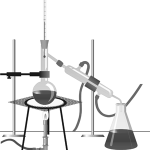For those of you not into non-US sports and metric numbers, you may recognize these as the size of a soccer (aka Futbol) goal, the distance between the goal line and where a penalty kick is taken from, and the average speed a soccer ball is kicked (in meters and meters / sec respectively). For those wanting a little more Americana, think of the distance as slightly more than half the distance from home plate to the pitcher's mound. When you calculate this out, that means that the average soccer ball reaches the goalie in approximately 350ms.
A lot of study has been done on peoples reaction time to various stimuli. As a kid, I remember getting a stopwatch and would periodically play around to see how quickly I could start / stop it. Nowadays, there are plenty of phone and computer games that do the same with a much higher degree of accuracy. Experimentally, college age students, show that the average individual is able to react to an auditory stimulus in approximately 160ms, and a visual stimulus in approximately 190ms; with the numbers being slightly faster for males over females.
(It's not DIY Experiment Thursday, but I'll give you a freebie. Get a friend and hold a ruler at the 0 mark between their thumb and index finger. Drop the ruler and have them catch it. See how many centimeters drop to where they catch it. Do some simple math, and you can quickly figure out reaction time).
So what does this mean for our poor goalie in the net? At the moment the kickers foot hits the ball, and the goalie starts to react, the ball is already at least halfway to the goal. Assuming a well placed ball (to the corners or sides), the goalie has less than 200ms to get to the ball. But all hope is not lost, there are a couple of things working for the goalie -- anticipation and cutting down the angle. By taking a step or two forward (there are rules against how far a goalie can be out from the goal), the goalie can significantly cut down on the amount of area needed to cover from 58.5m^2 to possibly less than 50m^2. But even then, considering no World Cup team has the Flash or Quicksilver it still takes time for a person to move from point A to point B. And for this, the only solution is to anticipate where the ball is going to go. This is why you'll see instances where the keeper goes one way, the ball goes the other; the goalie had to make a decision before the ball was even kicked.
So soccer definitely doesn't do itself any perceptual favors with some of its on-field acting (and based on the 4-5 bikers that have posted their anecdote in the last week or so), I still wouldn't want to be a goalie with elimination on the line coming down to penalty kicks. The Big Wheel in Vegas may have better odds...
References:
- FIFA "Laws Of The Game: 2014/2015"
- O'Callaghan "The science of penalties" 18 June 2014
